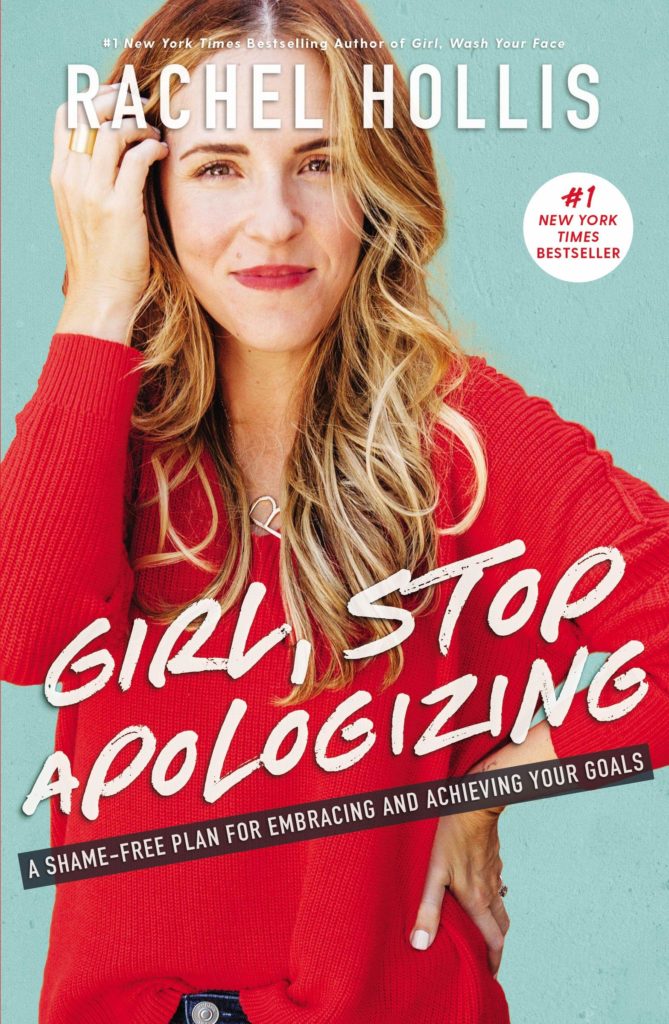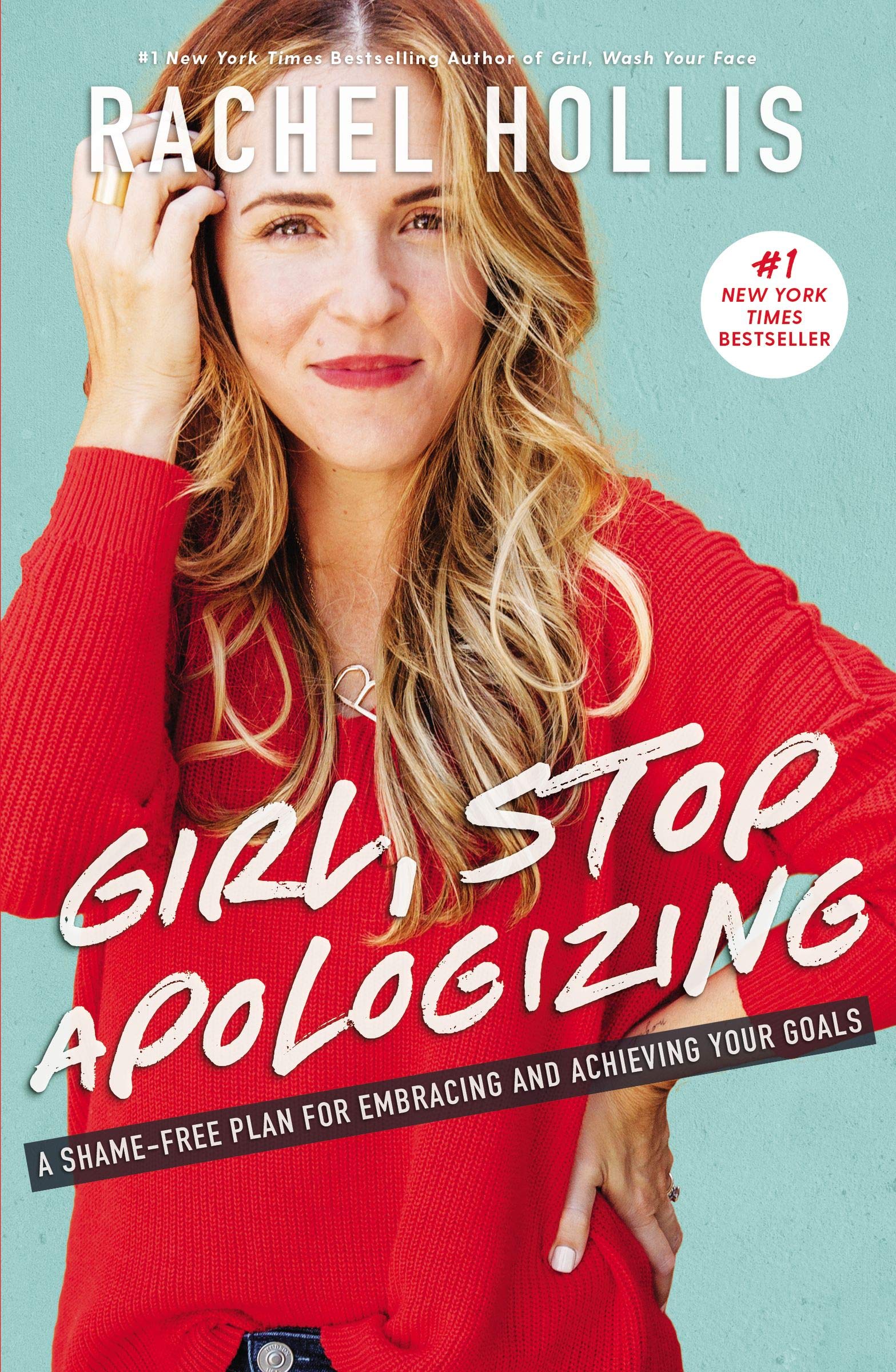By Olivia Schmid | | Opinions Editor

I remember sitting in the window seat of Cafe Arabella (which is just about the most adorable little cafe in my hometown, Lititz, PA) and knocking this book out in one sitting with my iced coffee in one hand and a macaroon in the other. Considering Rachel Hollis’ Girl, Stop Apologizing has grown to be one of the most popular books in the self-help genre as of late, I’m surprised that I didn’t get my hands on this sooner. Pair a great book like this one with the occasional glance out the window to people watch, and you’ll have yourself a wonderfully relaxing time—major main character vibes. I assure you.
I often get embarrassed to share my dreams and goals for the future with other people. What is the life of Olivia Schmid like 5, 10, 15 years from now? What is considered “too far fetched” or “out there?” What should I be aiming for, and do I just play it safe with what I feel qualified to do? What happens if I say my dreams out loud?
Reading Hollis’ work was like reading much-needed motherly advice. One of my favorite quotes from Girl, Stop Apologizing reads, “Embracing the idea that you can want things for yourself even if nobody else understands the whys behind them is the most freeing and powerful feeling in the world” (xiii).
And if the idea of coming to terms with those dreams and goals of yours isn’t stress-inducing enough, we also have to worry about finding a way to bring them to fruition. That’s where the lovely Rachel Hollis comes in, because according to her, it takes 3 things:
- Letting go of the excuses that keep you stuck in one place
- Adopting great habits and behaviors that set you up for success
- Acquiring the skills necessary to make exponential growth possible
And thus make up the 3 parts of Girl, Stop Apologizing (although I probably never will).
PART ONE: EXCUSES TO LET GO OF
This section was a little hard to digest, mainly because the list of 9 excuses she gave that are apparently overused also happen to be excuses that I’ve used not once, not twice, but multiple times in a plethora of ways (so yes, I guess she’s right when she says they’re overused). Probably the excuse that hits home for most is Excuse #3: “I don’t have time.” I read this and immediately thought, Okay Rachel, but get this. I actually don’t have any time. Legit. Hollis points out the fact that we are all in control of our own schedules. You have to make time, because you’ll never just casually find it (especially in college). If only.
A quote that I love is, “There isn’t one thing in your life or your calendar right now that you didn’t allow to be there” (21). This really resonated with me, because my main focus this year has been all about intention and being intentional with the ways in which I’m using my time. What am I doing with my time? Who am I spending my time with? Are they helping me become the version of myself that is capable of achieving my goals? After all, “growth is happiness” (19). (Side note: Can you tell I’m in love with this book considering how many quotes I’m using?) Anyway, I’ve been reflecting on this a lot recently, and I think this is why I am so obsessed with self-help books in the first place: reading about personal development has helped me grow in ways I can’t explain. I feel happier knowing how and why my mind works the way it does and how I can help myself.
Hollis proposes we take “five to strive.” This is a strategy where you set aside 5 hours each week that are all dedicated to working towards your goals. This is one of the methods Hollis used in order to continue writing her books while being a mother and still having a full-time job. She also advises to write a letter for yourself from yourself as the version of you that is persistent and knowledgeable. It’s meant to be a source of encouragement and inspiration that has already come from you whenever you need a little support.
PART TWO: BEHAVIORS TO ADOPT
Behavior is significantly easier to change than your heart, emotions and feelings. As practically every other self-help book I’ve reviewed has mentioned, your behavior is integral to how likely and how soon your dreams are to be realized. Focus on 1 dream at a time, even if you think the dreams compliment each other. Hollis breaks it down: 10 years, 10 dreams, 1 goal.
10 years: Where do you see yourself in 10 years? Write it down. Hollis offers a lot of great prompts, but a few would include writing about the best version of yourself, or what you hope to be up to in 10 years’ time.
10 dreams: Write down “I am” and “I have” statements every day to manifest your dreams.
(Notice how beneficial writing our goals down is??? And GRATITUDE!! WRITE THAT SHIT DOWN!)
Girl, Stop Apologizing is surprisingly one of the only self-help books I’ve read that takes time to address asking for help. This is a habit that is really important, because you never do it completely alone without help. Even if you think you do… you don’t. We all need help and you shouldn’t be afraid to ask for it.
PART THREE: SKILLS TO ACQUIRE
I love reading about the skills that help us do better, and I’ve outlined my favorites that Hollis mentions in her book. A lot of these skills are supported by specific habits and behaviors, so read on!
Skill #1: Planning
You need to be able to plan. Plan out those next steps, how to meet your goals, who to meet with, where to go, etc. It’s all in how you plan. Hollis recommends establishing 3 guideposts that you can strive to meet. If you don’t know how to achieve them, ask yourself what and who you can turn to that will have a suggestion or answer for you.
Skill #2: Confidence
You need to be confident in yourself and in your work. She starts this part by talking about physical appearance, which I found rather interesting. Hollis stresses that you need to be confident in what you look like, not in what you think you’re supposed to feel confident in. If you appear confident, those around you will reciprocate that energy and in turn, boost your confidence.
Skill #3: Effectiveness
You need to be effective. A question from The One Thing by Gary Keller asks, “What’s the one thing you could do right now, today, that would make everything else unnecessary? When it comes to your results list, the question should be, ‘what’s the one thing I could right now, today, that would help me achieve all of this faster, easier, and more efficiently?’” (192). Do whatever it takes to be effective in your practice—make it work.
All in all, Rachel Hollis’ Girl, Stop Apologizing is up there on my list of all-time favorites—there’s a reason it’s so popular. If you’re looking for a short but thought-provoking read, this is an absolute must. And that’s the gist!
Sophomore Olivia Schmid is the Opinions Editor. Her email is oschmid@fandm.edu.
